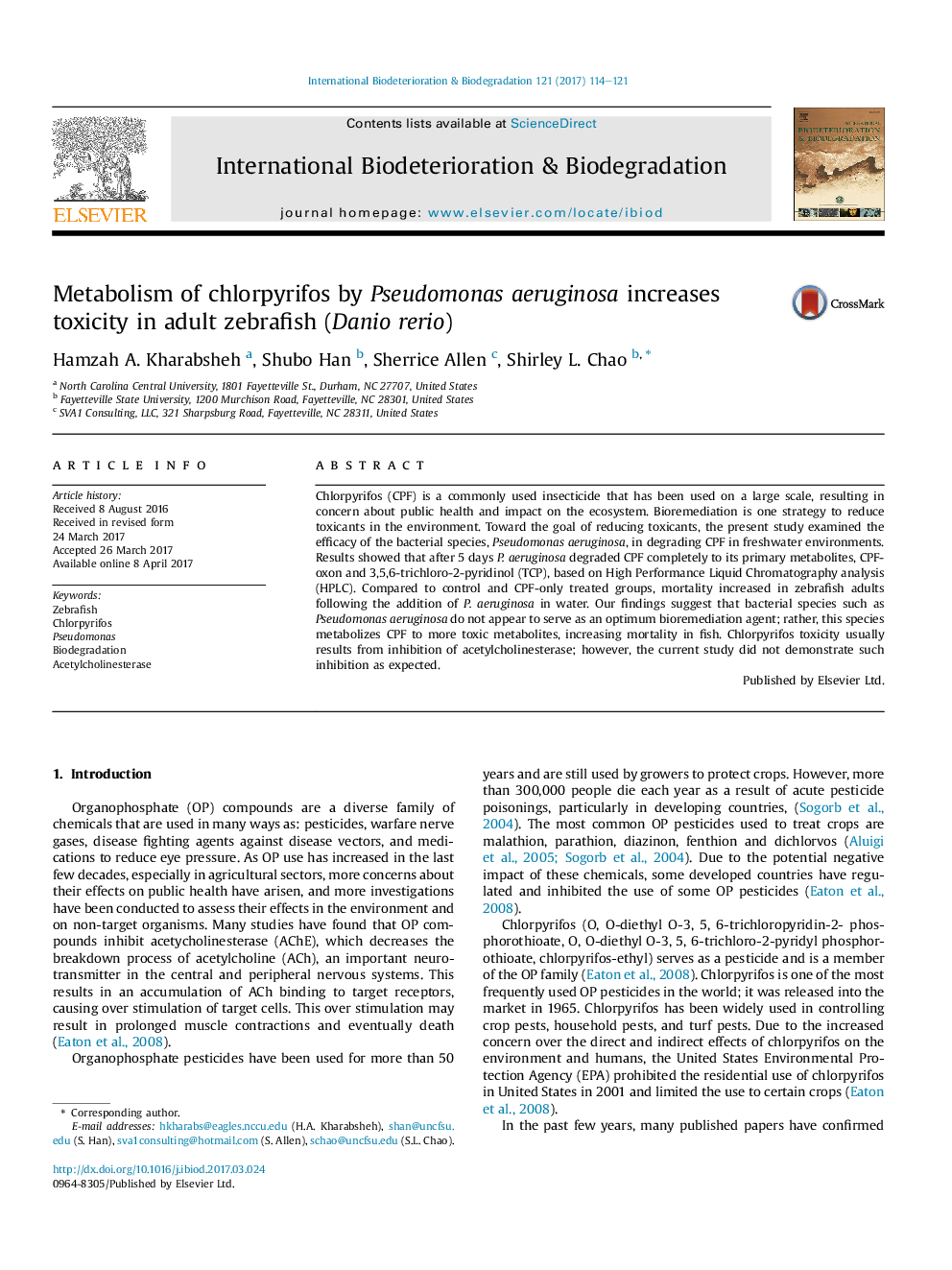| Article ID | Journal | Published Year | Pages | File Type |
|---|---|---|---|---|
| 5740419 | International Biodeterioration & Biodegradation | 2017 | 8 Pages |
â¢Chlorpyrifos (CPF) is degraded by Pseudomonas aeruginosa to metabolites, CPF-oxon and 3, 5, 6-trichloro-2-pyridinol (TCP).â¢Mortality to Chlorpyrifos Increases significantly in zebrafish adults following the addition of P. aeruginosa.â¢Pseudomonas aeruginosa metabolizes CPF to more toxic metabolites, increasing mortality in fish.â¢No significant acetylcholinesterase inhibition observed in fish brain following CPF metabolism by Pseudomonas aeruginosa.
Chlorpyrifos (CPF) is a commonly used insecticide that has been used on a large scale, resulting in concern about public health and impact on the ecosystem. Bioremediation is one strategy to reduce toxicants in the environment. Toward the goal of reducing toxicants, the present study examined the efficacy of the bacterial species, Pseudomonas aeruginosa, in degrading CPF in freshwater environments. Results showed that after 5 days P. aeruginosa degraded CPF completely to its primary metabolites, CPF-oxon and 3,5,6-trichloro-2-pyridinol (TCP), based on High Performance Liquid Chromatography analysis (HPLC). Compared to control and CPF-only treated groups, mortality increased in zebrafish adults following the addition of P. aeruginosa in water. Our findings suggest that bacterial species such as Pseudomonas aeruginosa do not appear to serve as an optimum bioremediation agent; rather, this species metabolizes CPF to more toxic metabolites, increasing mortality in fish. Chlorpyrifos toxicity usually results from inhibition of acetylcholinesterase; however, the current study did not demonstrate such inhibition as expected.
